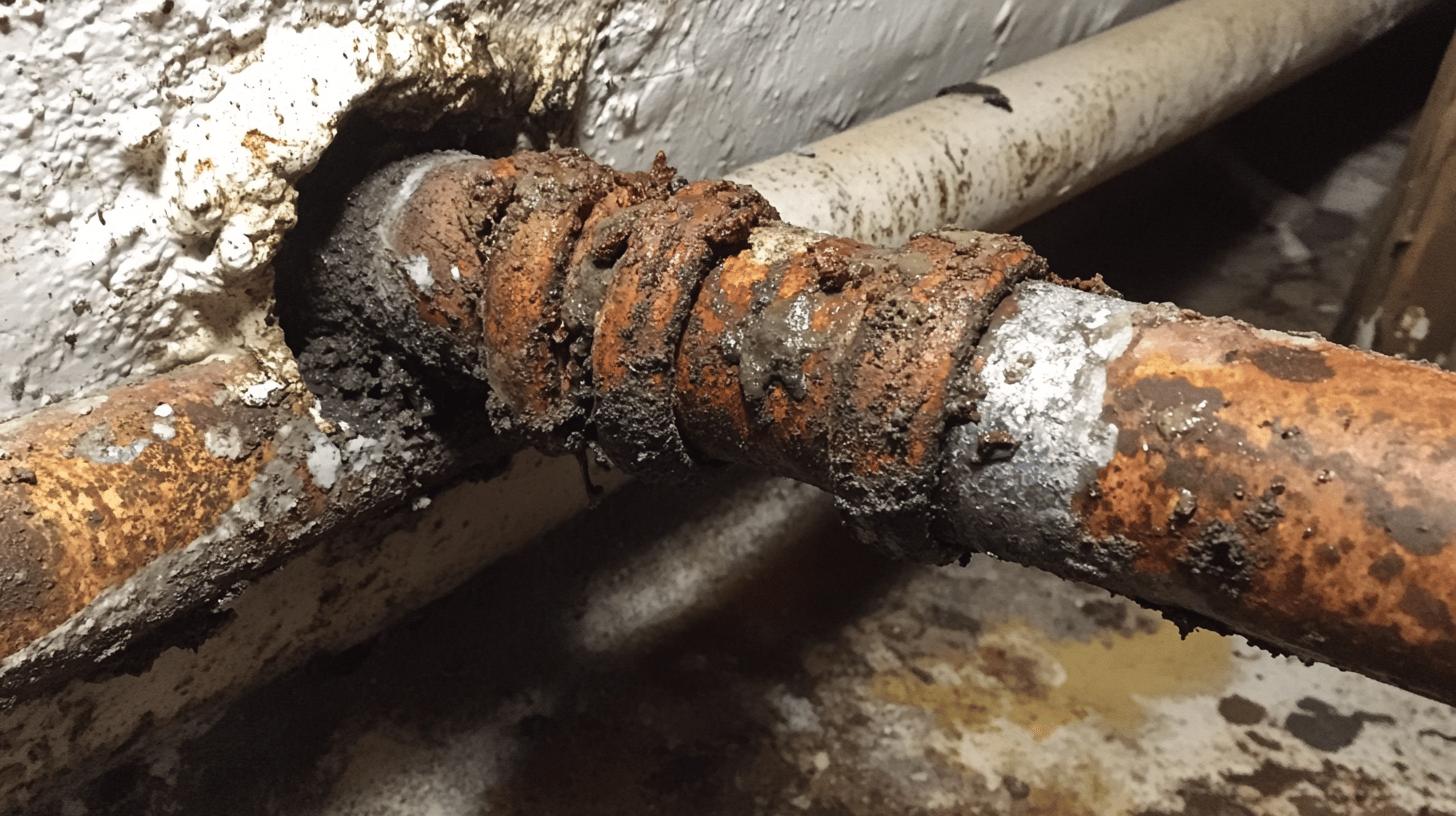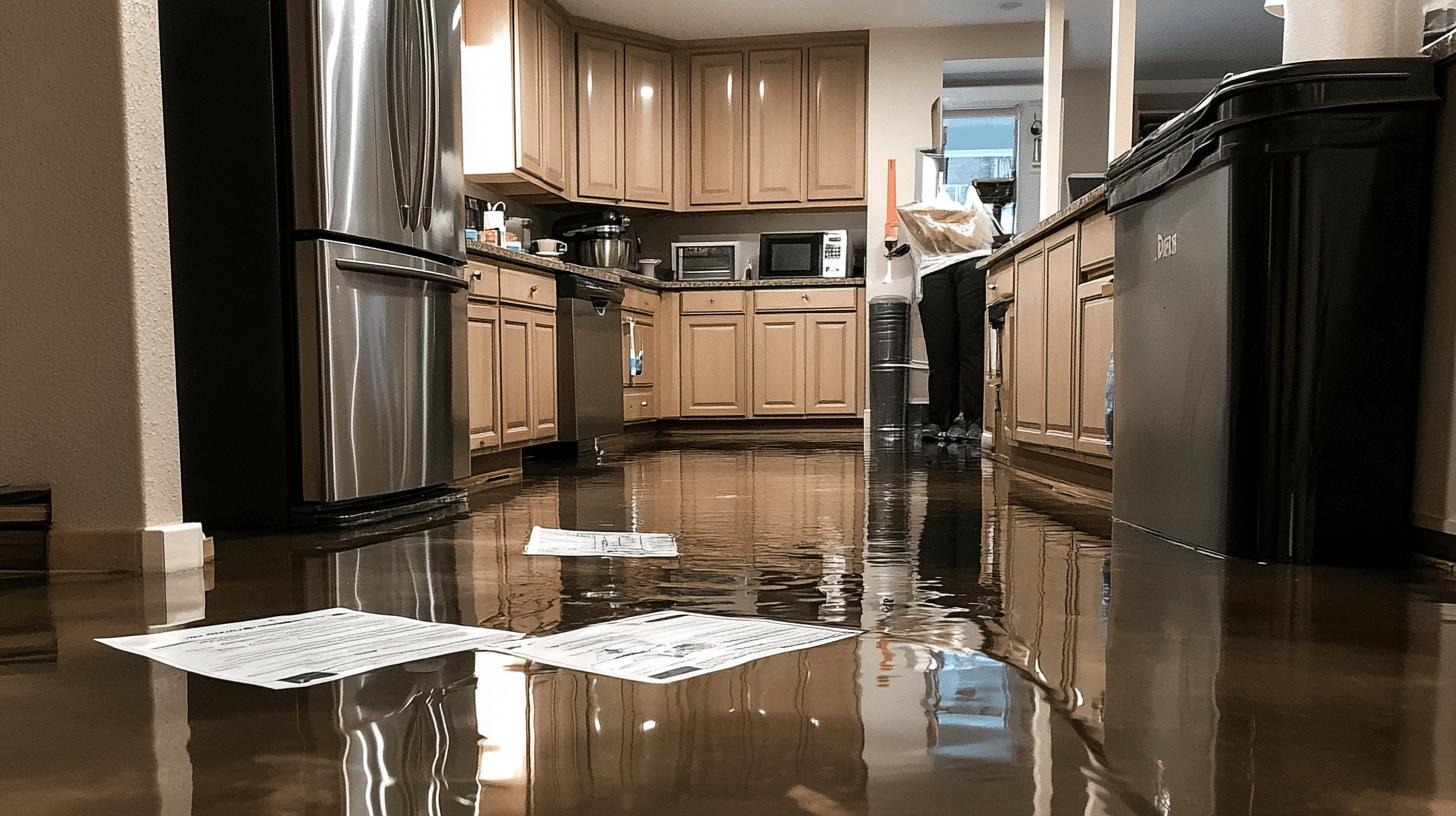TL;DR:
- Homeowners insurance typically covers sudden plumbing issues, like burst pipes and hidden leaks, under the dwelling section.
- Coverage excludes costs for faulty plumbing and issues due to neglect or maintenance.
- Commonly covered incidents: burst pipes, hidden leaks, appliance leaks, overflowing fixtures, sewage backups.
- Not covered: tree root damage, gradual leaks, corroded pipes, and frozen pipes from neglect.
- File claims by documenting damage, mitigating further harm, contacting the insurer, meeting with an adjuster, and following up.
- Additional coverage options: water backup coverage, flood insurance, home warranties. Regular plumbing maintenance helps prevent issues and claim denials.
Think your homeowners insurance will cover unexpected plumbing problems? It’s not always that simple. One day your pipes are fine, and the next, you’re dealing with a burst pipe or a hidden leak causing serious damage. This guide breaks down what insurance usually covers and what it doesn’t, so you’re not caught off guard. Keep reading to get the facts and learn how to handle plumbing issues and insurance claims the right way.
Does Homeowners Insurance Cover Plumbing Surprises?
Does homeowners insurance cover plumbing issues? Usually, yes—but only for sudden problems like burst pipes or hidden leaks. These are covered under the dwelling section, which pays for damage to walls, floors, or ceilings caused by water—not for fixing the pipes themselves.
Coverage applies if the damage is unexpected, like a burst pipe from freezing temperatures. Once you pay your deductible, the insurance kicks in to repair the damage. Just remember, it covers the mess the water causes, not the broken plumbing.
Here are five common scenarios where insurance might provide coverage:
- Burst Pipes: Cracks or breaks in pipes due to extreme cold or high pressure.
- Hidden Leaks: Undetected leaks causing significant water damage over time.
- Appliance Leaks: Water damage from malfunctioning appliances like washing machines.
- Overflowing Fixtures: Damage from overflowing toilets, bathtubs, or sinks.
- Sewage Backups: Backed-up sewer lines causing water damage indoors.
You’re usually reimbursed for repairs after filing a claim and paying your deductible. To start, document the damage, contact your insurer, and let an adjuster evaluate the situation. A detailed report from a professional plumber can help speed up the process.
Plumbing Problems Not Covered by Homeowners Insurance

No, homeowners insurance doesn’t cover plumbing issues caused by neglect or lack of maintenance. If you ignore visible leaks or skip regular upkeep, you might not be covered. Insurance is for sudden, unexpected problems, not preventable issues due to poor maintenance.
Sewer Backups and Sump Pump Failures
No, sewer backups and sump pump failures aren’t covered by standard homeowners insurance. You’ll need extra coverage, like water backup insurance, to protect against these issues. Without it, you’ll be responsible for the clean-up and repairs.
Here are four plumbing problems typically not covered by standard insurance:
- Tree Root Damage: Roots blocking or breaking sewer lines.
- Gradual Leaks: Slow leaks over time from wear and tear.
- Corroded Pipes: Damage from pipes that worsen over time without upkeep.
- Frozen Pipes: Burst pipes from not maintaining heat in cold weather.
Regular maintenance is important to avoid claim denials. Check your plumbing regularly and fix small issues before they become big problems. Hiring a professional plumber helps keep everything in good condition and reduces the risk of expensive repairs that won’t be covered by insurance.
How to File a Homeowners Insurance Claim for Plumbing Issues
Filing a claim for plumbing issues needs a detailed approach to ensure approval, especially for sudden damage. Follow these steps to navigate the claims process:
-
Document the Damage: Take clear photos and videos. Detailed records strengthen your claim with tangible evidence.
-
Mitigate Further Damage: Take action to prevent more harm, like shutting off the water. Insurers need proof that you’ve minimized additional damage.
-
Contact the Insurer: Notify your insurer as soon as possible. Quick reporting is crucial, as delays can complicate the process.
-
Meet with an Adjuster: An adjuster will review the damage and may need supporting documentation. Be ready to provide evidence and answer questions.
-
Follow Up on the Claim: Keep in touch with your insurer to track your claim’s progress. Ensure paperwork is complete and respond promptly to avoid delays.
Professional plumbers play a big role in supporting your insurance claim. They can accurately assess and document damage, which makes the process smoother. Their expertise adds credibility to your claim and helps speed up approval.
Additional Coverage Options for Plumbing-Related Issues

Does homeowners insurance cover all plumbing issues? Not always. It often excludes things like sewer line replacements or flooding. That’s where extra coverage comes in handy.
Water backup coverage helps with sewer backups and sump pump failures, which standard policies usually don’t cover. Flood insurance is key if you live in a flood-prone area since it covers water damage regular insurance won’t. A home warranty can also be useful, covering repairs or replacements for plumbing systems.
| Coverage Type | What It Covers | Cost Range |
|——————–|———————————————————–|——————-|
| Water Backup | Damage from sewer backups and sump pump failures | $50 – $250/year |
| Flood Insurance | Water damage due to natural flooding | $300 – $700/year |
| Home Warranty | Repairs/replacements of home systems and appliances | $300 – $600/year |
These additional coverages provide peace of mind and financial protection, covering gaps left by standard insurance. Investing in these insurances ensures your home is protected against unforeseen plumbing expenses.
Preventing Plumbing Problems and Minimizing Insurance Claims
Preventive maintenance minimizes plumbing problems and reduces potential insurance claims for water damage. Proactively maintaining your plumbing avoids costly repairs from leaks that might not be insured.
To prevent plumbing issues and mitigate claims, consider these measures:
-
Regular Inspections: Check your plumbing system regularly to spot any wear or damage early.
-
Use Smart Leak Detectors: Smart detectors warn you before minor leaks become major problems.
-
Insulate Pipes: In cold climates, insulate pipes to prevent freezing and bursting.
- Address Minor Leaks Promptly: Fix small leaks quickly to stop them from becoming major issues.
Working with professional plumbers is crucial for thorough maintenance. Their expertise allows accurate assessments and timely interventions to prevent issues. Using professional services helps maintain your plumbing system’s integrity and avoids unnecessary insurance complications.
Final Words
When it comes to homeowners insurance and plumbing, sudden and accidental issues, like burst pipes, are usually covered, giving you some peace of mind for unexpected mishaps. However, problems caused by neglect or poor maintenance aren’t covered, highlighting the importance of regular upkeep.
To file a plumbing-related insurance claim, you need to document the damage and get a professional assessment, which can help speed up the approval process. Additional coverage like flood insurance and home warranties can protect you in situations not covered by standard policies.
Regular maintenance and preventive care not only reduce the likelihood of claims but also keep your plumbing in good shape. Understanding what homeowners insurance covers helps you make smart choices to protect your home.
FAQ
Does homeowners insurance cover plumbing leaks?
Homeowners insurance typically covers plumbing leaks when they occur suddenly and accidentally, leading to water damage. This is generally included in the policy’s dwelling section, which addresses structural damage.
Does homeowners insurance cover broken pipes under the foundation?
Insurance usually covers broken pipes under the foundation if the break is sudden and accidental. Coverage may include repairs and repairs for water damage resulting from the broken pipe.
Is a toilet leak covered by home insurance?
A toilet leak is often covered if it’s sudden and accidental, leading to water damage. However, regular maintenance and repairs for worn parts are your responsibility.
Does homeowners insurance cover plumbing pipes and replacement?
Home insurance generally covers plumbing pipes if they burst suddenly and accidentally. Replacement coverage depends on the policy, so check your specific terms for details.
Does homeowners insurance cover roots in pipes?
Most homeowners insurance policies do not cover damage caused by roots in pipes, as this typically falls under gradual damage, which isn’t considered sudden and accidental.
Is a clogged drain covered by insurance?
A clogged drain is usually not covered unless it results in sudden and accidental damage. Gradual clogs from lack of maintenance are typically your responsibility.
Does State Farm home insurance cover plumbing issues?
State Farm, like many insurers, covers sudden and accidental plumbing issues. It’s essential to review your policy for specific coverages and exclusions.
Does Allstate homeowners insurance cover plumbing?
Allstate generally covers sudden and accidental plumbing incidents. For specifics, check your policy and discuss with your insurance agent.
Does homeowners insurance cover broken sewer pipes?
Homeowners insurance usually doesn’t cover broken sewer pipes unless they result in sudden damage. Separate coverage like sewer backup insurance may be needed.
Does homeowners insurance cover plumbing issues in Texas?
Homeowners insurance in Texas typically covers sudden and accidental plumbing incidents. Standard exclusions apply, so it’s important to review your policy details.

